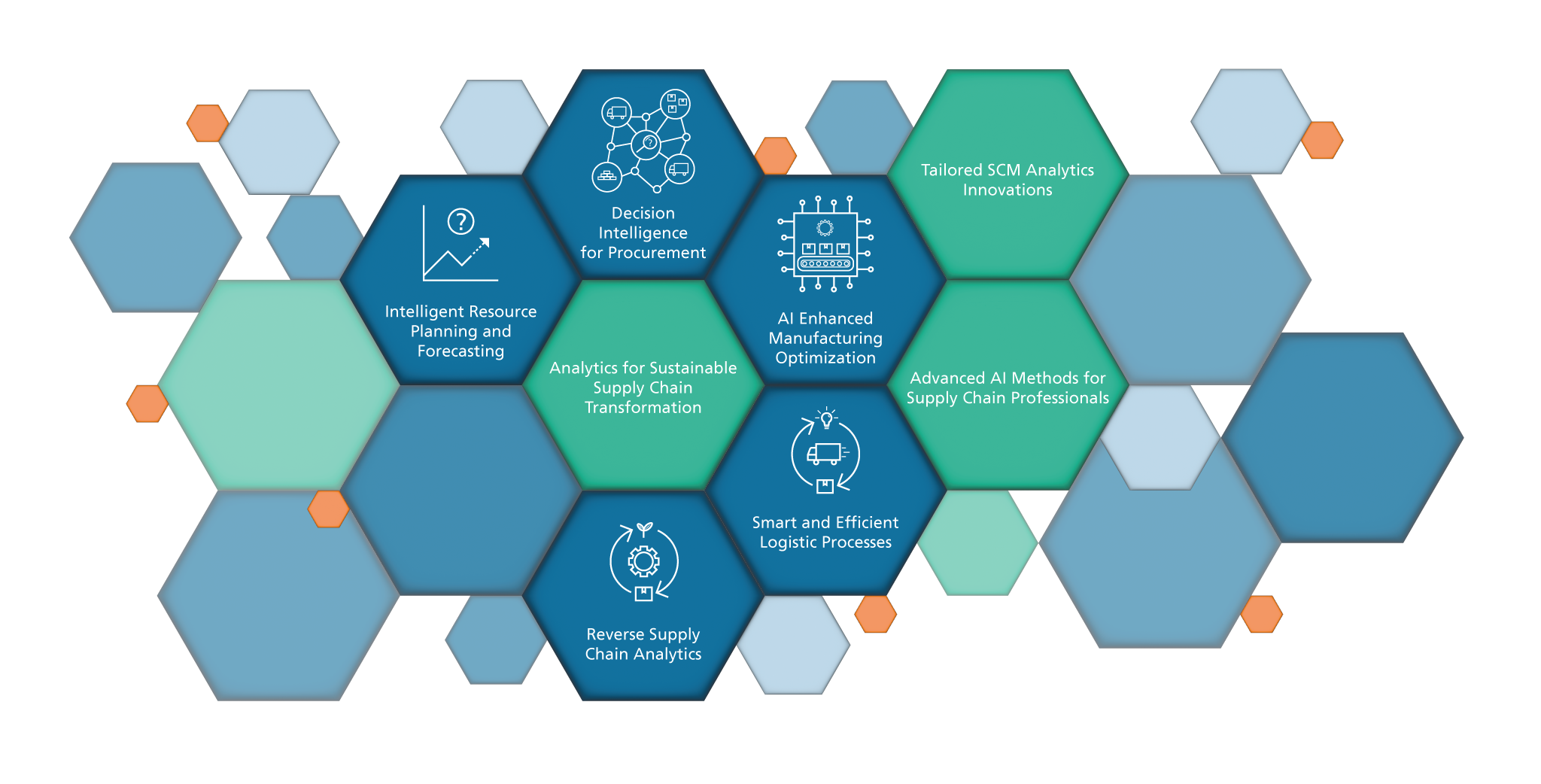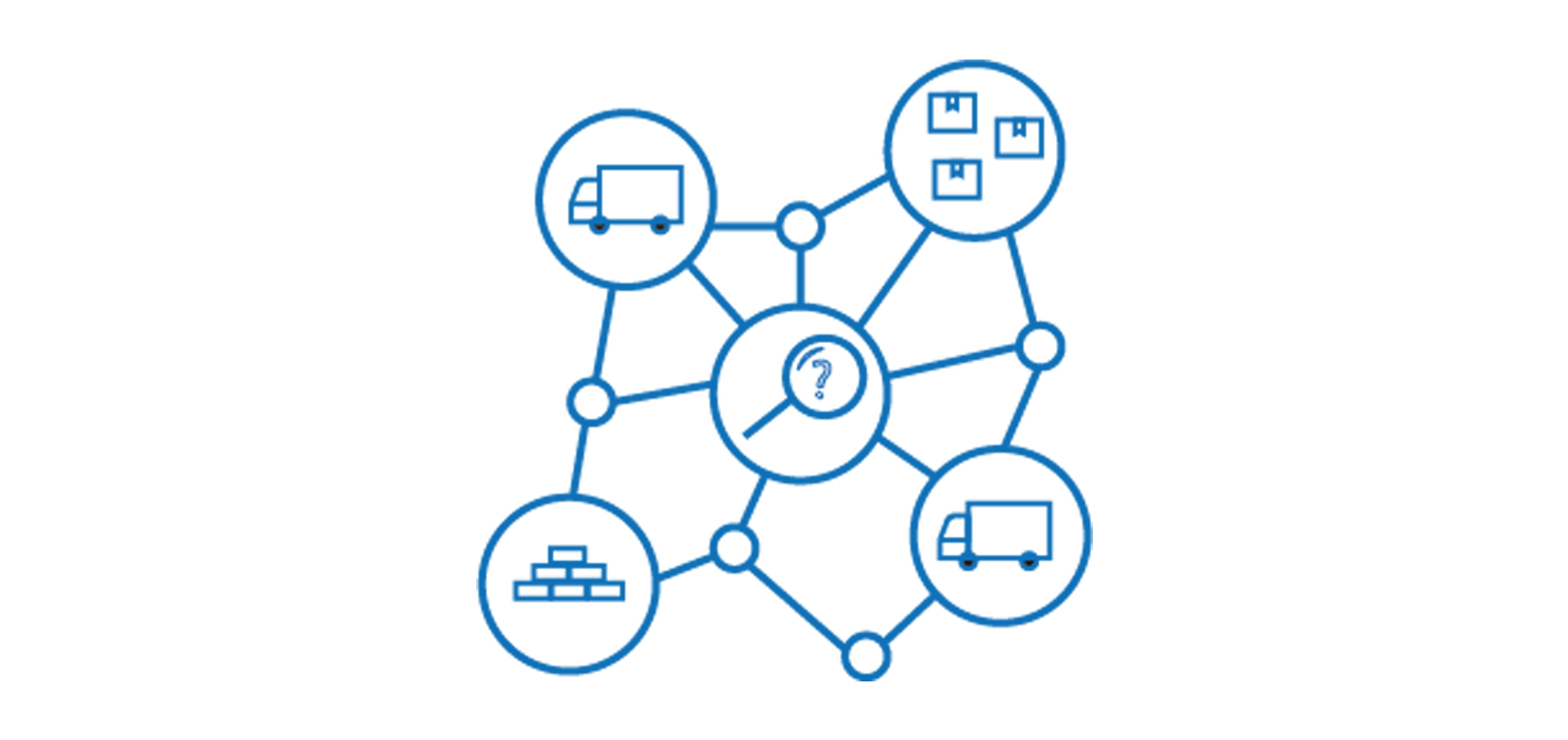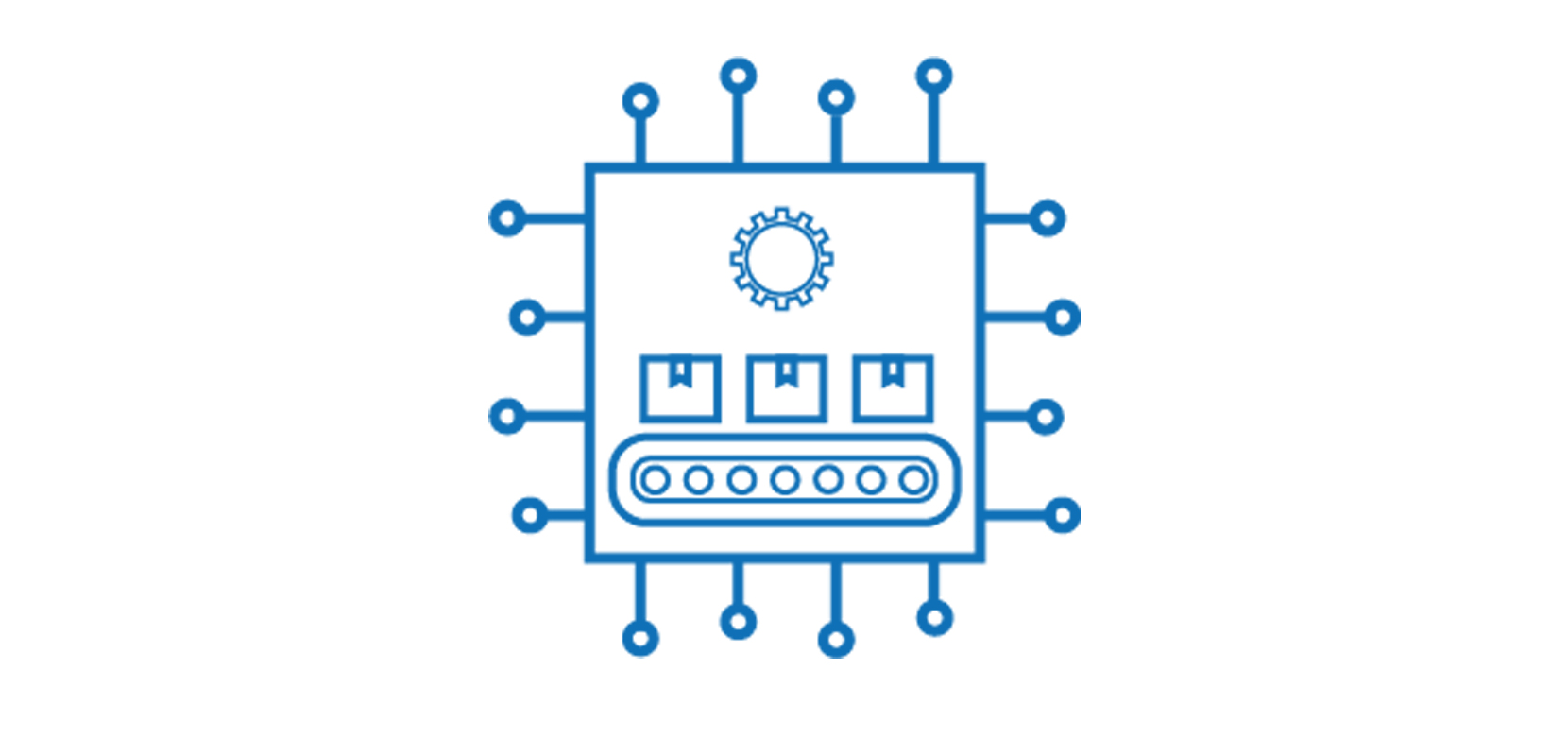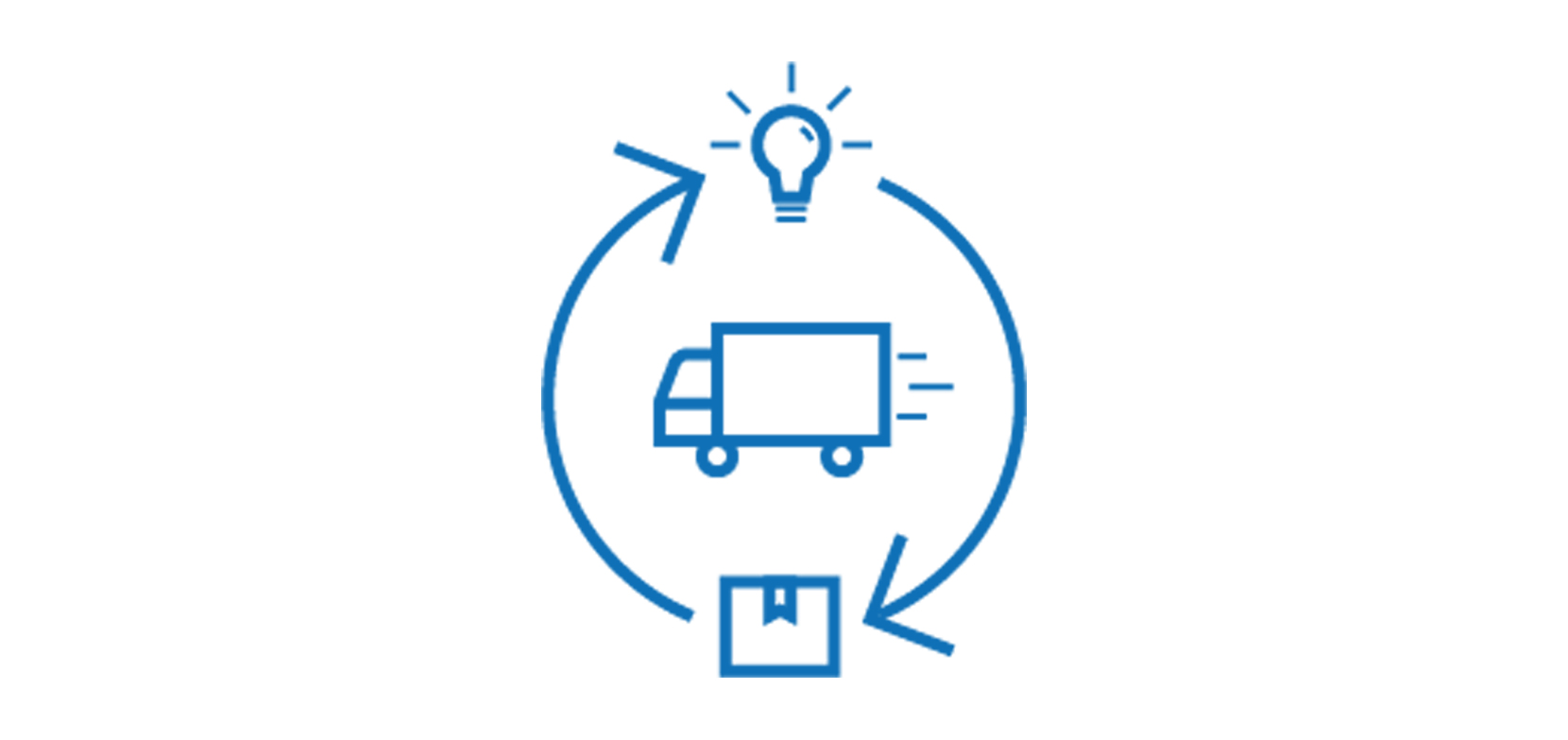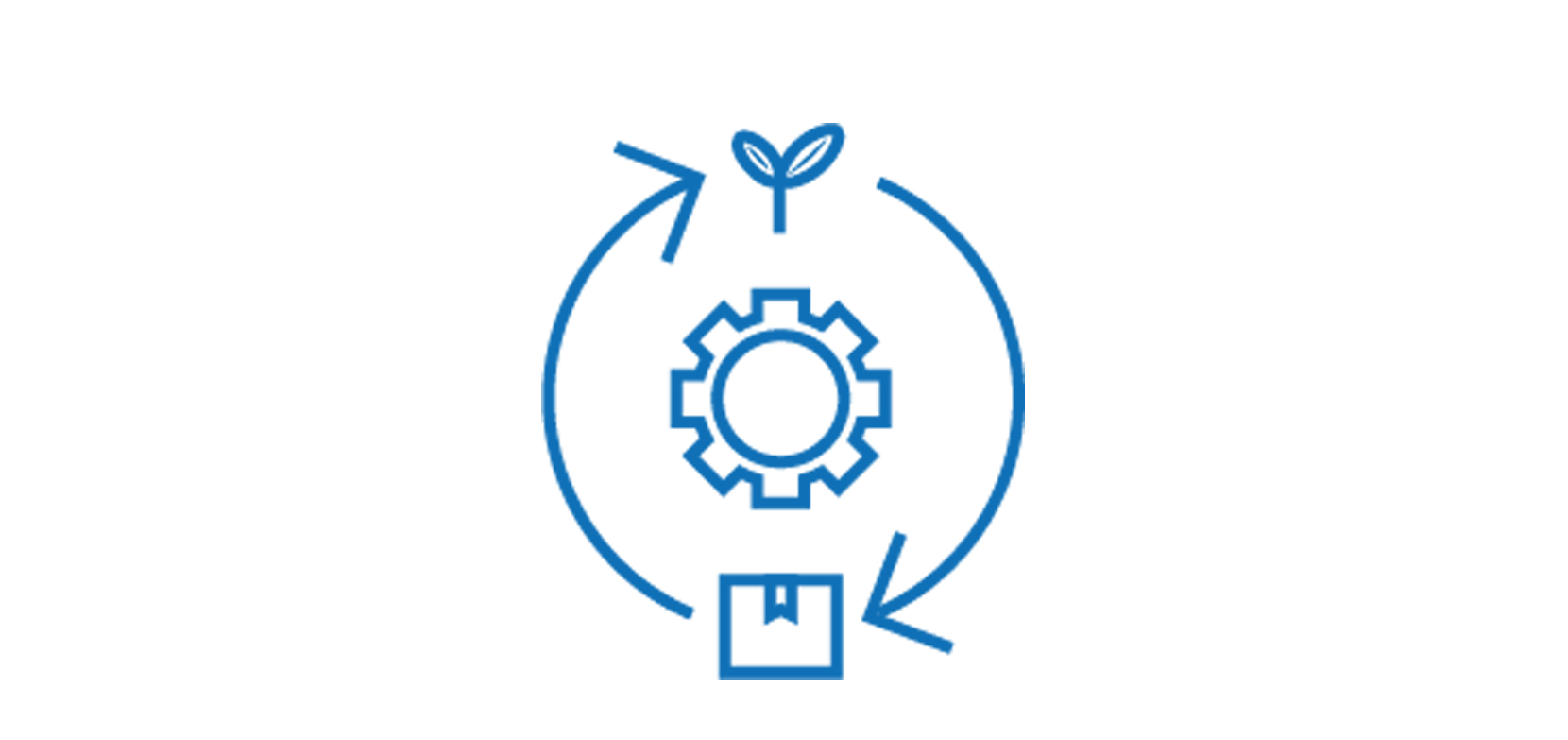Efficient, resilient and sustainable supply chains with AI and analytics
In our department, we conduct application-oriented research into state-of-the-art AI solutions for all key functions of the supply chain. Our goal is to sustainably transform the supply chain with the help of intelligent machine learning and optimisation algorithms - for greater efficiency, resilience and resource conservation!
We specialise in intelligent resource planning and forecasting, AI-enhanced manufacturing optimisation and quality improvement, smart and efficient logistics processes and analytics for greater sustainability in the supply chain. Our solutions not only improve operational efficiency, but also ensure resilience to disruptions and support the development of sustainable business processes. Our offerings, including AI methods for planning specialists in logistics, production and supply chain and customised end-to-end solutions, are geared towards both immediate operational tasks and strategic sustainability goals. Our approach combines practical knowledge with cutting-edge AI research so that we are constantly developing our service portfolio dynamically. Take advantage of the transformative potential of analytics and AI in your supply chain and experience how efficiently, responsively, resiliently and sustainably your supply chains and individual network nodes can be organised as a result.
